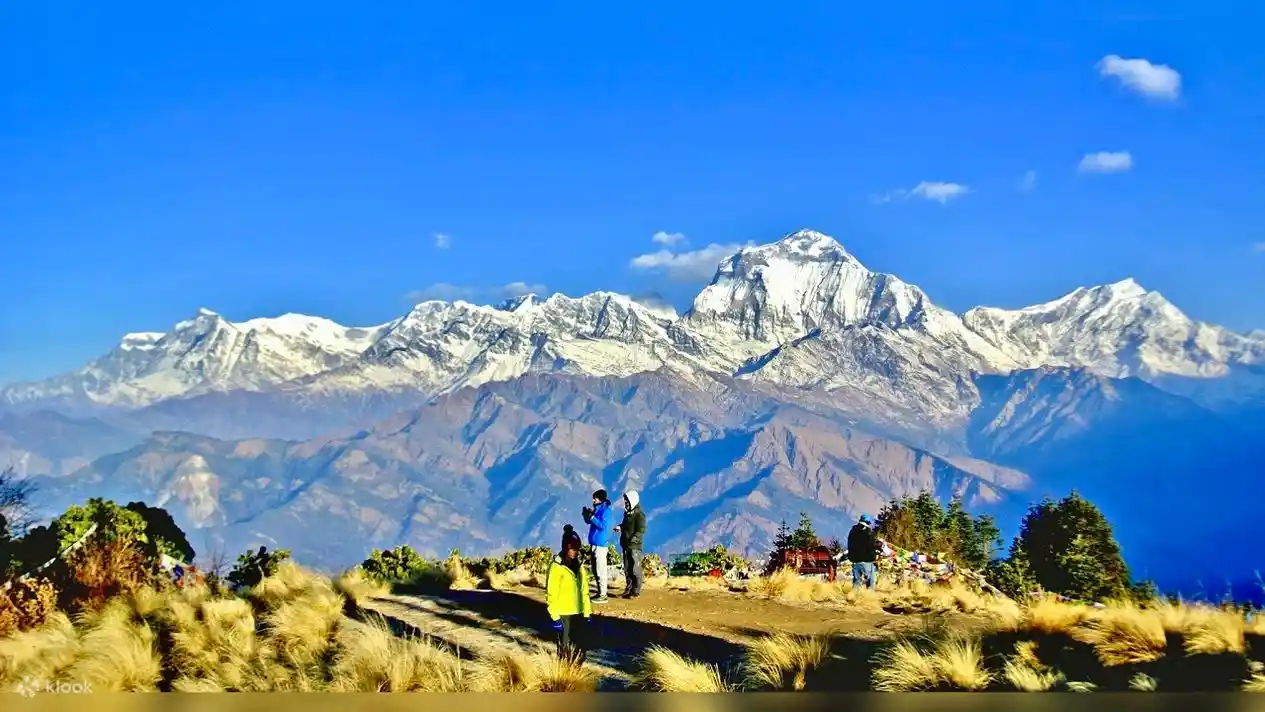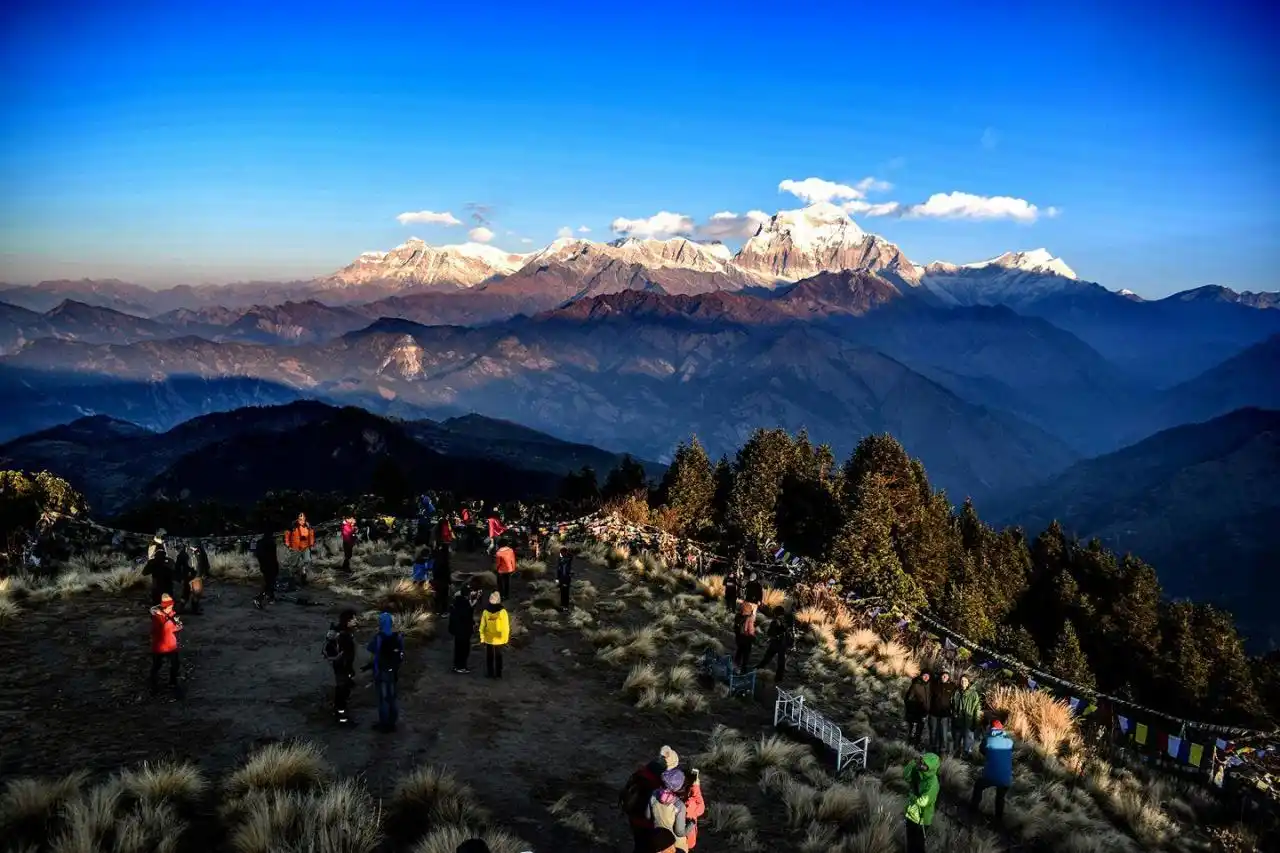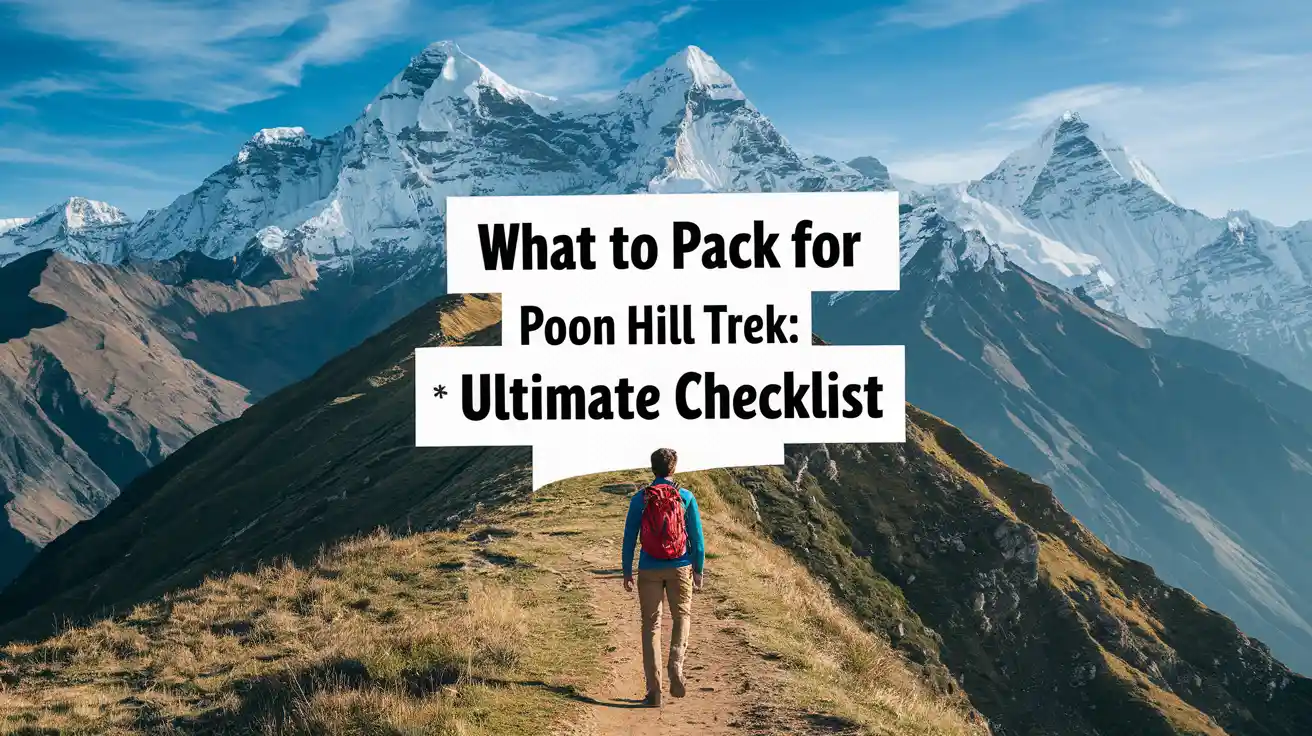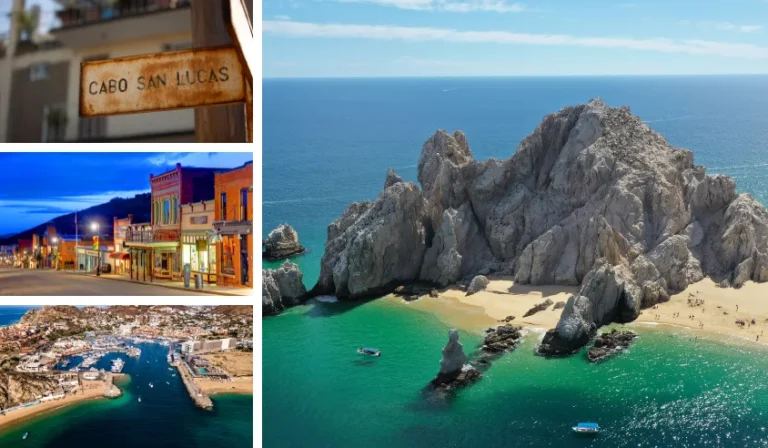What to Pack for Poon Hill Trek: The Ultimate Checklist
Are you ready to see the stunning sunrise over the Annapurna Himalayas on the Poon Hill Trek? The Ghorepani Poon Hill Trek is a short trek in Nepal that offers an unforgettable adventure. But, are you ready for the trekking experience?
As you start this sunrise view trek, packing right is key for a comfortable and fun trip. Being well-prepared is the secret to a great Himalayan trekking route adventure.

If you’re planning a trip to the Poon Hill Circuit trek, you’re in for an incredible experience!
This trek stands out because it provides amazing views of the Annapurna South, Annapurna II, Annapurna III, Annapurna IV, and Dhaulagiri mountain ranges and offers an exciting level of fitness challenge during the journey.
But before you hit the trail, the journey requires you to pack correctly and keep the bag lighter to ensure total trip satisfaction. You’ll regret carrying unnecessary weight. And packing too little might make you miss out on essentials.
This complete guide will provide you with all the necessary information to achieve an ideal packing for a smooth and unforgettable experience on the Ghorepani Poon Hill circuit trek adventure.
Key Takeaways
- Essential gear for a comfortable trek
- Clothing suitable for varying weather conditions
- Must-have items for a sunrise view
- Tips for staying hydrated and energized
- Important documents to carry
What Makes the Poon Hill Trek Special?

The Ghorepani Poon Hill Trek is famous for its stunning landscapes and charming villages. It’s a top choice for travelers. This is because it combines nature’s beauty with cultural immersion.
✔️ Trail Highlights and Scenic Views
The path to Poon Hill is filled with beautiful villages like Gurung Hill and Magar village, tea houses, and terraced fields. These places give you a peek into local village life.
Along the way, you’ll see panoramic views of the Annapurna Conservation Area, including Annapurna South, Annapurna Base, and Dhaulagiri, offering breathtaking views that make the trek worthwhile.
✔️ Typical Weather and Seasonal Considerations
Knowing the weather is key for a great trip. The best times to go are spring (March to May) and autumn (September to November).
The weather is usually mild and clear, perfect for fantastic views. The trek is moderate, fitting for many personal fitness levels, though trekkers should be aware of the risk of altitude sickness at higher elevations.
Planning Your Poon Hill Trek Packing Strategy
Planning what to pack is key for a stress-free Poon Hill Trek. Knowing the trek’s length, difficulty, and facilities like tea houses is vital for an incredible trip.
✔️ Duration and Difficulty Considerations
The Poon Hill Trek lasts several days, typically 4-5 days, and requires a good level of fitness. When packing, think about the trek’s length and how hard it is. Trek itinerary advice often includes taking rest days to avoid altitude sickness and monitoring oxygen levels.
✔️ Weight Limitations and Porters
On the trek departure day, remember the weight limits for your luggage. If carrying a heavy backpack is hard, think about hiring a porter through a trekking agency like Discovery World Trekking or Nepal High Trek & Expedition.
Porters make the trek easier, letting you enjoy the stunning views without a heavy load.
| Service | Cost | Benefits |
| Porter Services | $20-$30 per day | Reduced load, local guidance |
| Guide Services | $30-$50 per day | Expert knowledge, enhanced safety |
✔️ Tea House Facilities and What They Provide
Tea houses along the Ghorepani Poon route offer basic needs like standard meals and places to stay. Knowing what they provide, such as hot water and hearty meals, helps you pack better.
They have simple guest house rooms and shared bathrooms, and serve local food like dal bhat, ensuring warm hospitality.
When trekking in Nepal, be ready for changing trek time and weather. Pack right, and ask locals or guides like Paul Gurung for tips on trekking well to make your Nepal Hiking Adventure memorable.
Essential Clothing Layers for Comfort
To have a great trekking experience, you need the right clothes for different weather. The Poon Hill Trek requires careful dressing due to changing temperatures and weather. Wearing layers is key for comfort and fitting in with the Annapurna Sanctuary environment.
✔️ Base Layers: Moisture-Wicking and Quick-Dry Options
Base layers are the first line of defense against sweat. They keep you dry.
“A good base layer is like a second skin,” many trekkers say.
Choose materials that wick away moisture and dry fast. This keeps you comfy on your hours trek each trek day.
Merino wool and synthetic fabrics are top picks for the Annapurna Circuit or Poon Hill trails.
✔️ Mid Layers: Insulation for Cold Mornings and Evenings
Mid-layers are essential for warmth in the chilly mornings and evenings.
Fleece jackets and insulated jackets are great for mid-layers. They keep you warm without being heavy.
When picking mid-layers, think about their weight and how easy they are to carry. This affects your comfort on the Ghorepani Poon Hill Trek.
✔️ Outer Layers: Weather Protection and Durability
Your outer layer must shield you from the weather and last through the trek.
Look for waterproof and breathable materials like Gore-Tex. They keep you dry and comfy.
These materials stop water but let moisture out. This keeps you dry and comfortable on the Annapurna Base Camp Trek or Poon Hill trails.
Footwear That Will Make or Break Your Trek
Your success on the Poon Hill Trek depends a lot on your shoes. The right ones can make your trip fun. But, the wrong ones can cause discomfort and spoil your unforgettable adventure. Your feet take the biggest hit on a trek, so they need protection and support.
✔️ Selecting Appropriate Hiking Boots or Shoes
Finding the right hiking boots or shoes is key to a good trek. Look for sturdy, waterproof, and comfy shoes. The Poon Hill trek has tough terrain and changing weather, so your shoes must be ready for it. Make sure they offer good ankle support and grip for the trekking route to Syauli Bazaar.
✔️ Trekking Socks and Blister Prevention Strategies
Trekking socks are vital for avoiding blisters. Choose moisture-wicking socks that fit right and don’t chafe. Bringing extra socks to swap during the day keeps your feet dry and blister-free. Also, using blister shields or lubricants on sore spots can help on this quick escape trek.
✔️ Camp Shoes for Evening Recovery
After a long hours trek, your feet need a rest. Camp shoes or sandals are great for evenings at tea houses. They let your trekking shoes dry, which helps prevent fungal infections, ensuring comfort in the beautiful village settings.
Backpacks and Luggage Organization
Effective luggage organization is key for the Poon Hill Trek. A well-organized backpack makes your trek better. It also makes sure you have all your gear ready for this intimate trek experience.
✔️ Day Pack Features and Size Requirements
A day pack is a must for your trek. It should be comfy, have lots of pockets, and be tough. Look for one that’s 20-30 liters to fit your day’s needs, ideal for carrying essentials like a reusable water bottle and trekking poles.
✔️ Main Luggage: Duffel vs. Backpack Options
Choosing between a duffel bag or a backpack depends on you and your trekking agency. If porters carry your stuff, a duffel might be best. But if you carry it, a backpack is better for private treks through the Annapurna Conservation Area.
✔️ Waterproofing and Protecting Your Gear
Keeping your gear dry is important. Use waterproof bags or covers. Also, pack clothes and gear in waterproof liners or dry bags for extra protection against the physical demands of the trek.
Sleep System and Nighttime Comfort Items
A good night’s sleep is key for a great trekking experience. When getting ready for the Poon Hill Trek, think about your sleep setup and comfort items for the night.
Your sleeping bag is vital for a restful night. It’s important to pick a bag that fits the Annapurna region’s climate.
✔️ Sleeping Bag Temperature Ratings for Annapurna Region
The Annapurna Himalayas can be very chilly, more so at higher elevations. You’ll need a sleeping bag that can handle temperatures down to -10°C to -15°C. Look for brands like The North Face and Marmot for quality bags that meet these needs for Ghorepani Poon nights.
✔️ Pillowcases, Liners, and Other Comfort Enhancers
Don’t forget about pillowcases and liners to boost your comfort. Tea houses might offer basic bedding, but your own pillowcase and liner can really improve things. A lightweight travel blanket can also add warmth, enhancing your level of care provided.
Personal Hygiene in the Mountains
Getting ready for your Poon Hill Trek means thinking about how to stay clean in the mountains. Keeping yourself clean is important for your health and comfort. It also helps protect the stunning landscapes.
✔️ Minimalist Toiletry Kit Essentials
A minimalist toiletry kit is essential for staying clean on your trek. You’ll need a toothbrush, toothpaste, biodegradable soap, and any must-have hygiene items. Choose travel-sized versions to save space and weight in your backpack for this perfect blend of adventure and comfort.
✔️ Biodegradable Products and Environmental Considerations
Using biodegradable products is key to avoid water pollution and keep the beautiful landscapes pristine. Pick soap, toothpaste, and other items that are good for the planet. This helps the ecosystem and shows you care about the Annapurna Conservation Area.
✔️ Hand Sanitizer and Hygiene Best Practices
Hand sanitizer is a must-have for your hygiene kit, when hot water is hard to find. Sanitizing your hands often, like before eating, helps prevent getting sick. Also, washing your hands regularly and keeping your area clean makes your trek better, especially in traditional villages.
Health and Safety Supplies for Poon Hill Trek
When you start the Poon Hill Trek, keeping your health and safety first is important. The trek has its challenges, like altitude sickness, changing weather, and injuries. Being ready is essential for a remarkable trip.
✔️ Comprehensive First Aid Kit Components
A good first aid kit is your first defense against small injuries and illnesses. It should have band-aids, antiseptic wipes, pain relievers, and any medicines you need. “A well-stocked first aid kit can prevent small issues from becoming big problems,” says Dr. Jane Smith.
Don’t forget to include blister care and antiseptic cream in your kit for the trekking route.
✔️ Altitude Sickness Prevention and Medications
Altitude sickness is a big worry on the Poon Hill Trek because of the high elevations. Start by going up slowly and drink lots of water from a reusable water bottle. Taking Diamox can help with symptoms.
Knowing the signs of altitude sickness, like headaches and nausea, is key. This way, you can get help quickly.
✔️ Sun Protection and Insect Repellents
Keeping safe from the sun and bugs is very important. Use sunscreen with a high SPF, wear clothes that protect you, and apply insect repellents. “The right sunscreen and bug spray can really help you stay comfortable,” says a seasoned trekker from Himalaya Treks.
With the right health and safety gear, your Poon Hill Trek will be safe and fun.
Essential Trekking Equipment and Accessories

To tackle the Poon Hill Trek with confidence, it’s essential to pack the right gear. The right equipment can make your trek safer and more comfortable. It’s all about being prepared for amazing experiences.
✔️ Trekking Poles and Their Advantages on Steep Terrain
Trekking poles are a must for the steep terrain of the Poon Hill Trek. They offer extra stability and ease the strain on your knees. They’re also great for going down hills to Annapurna Base Camp or Syauli Bazaar.
✔️ Headlamps for Pre-Dawn Summit and Evening Use
A reliable headlamp is key for early morning or late evening treks to catch the sunrise view at Poon Hill. It lets you move safely in the dark. It’s a must-have for safety during pre-dawn summits.
✔️ Navigation Tools and Safety Equipment
Along with trekking poles and headlamps, you need the right tools and safety gear. This includes a detailed map, a compass, and emergency items like a whistle and first aid kit. These help you stay on track and handle emergencies on the Annapurna Circuit.
Food and Water Management
Starting the Poon Hill Trek means you need to manage food and water well. Good planning and preparation in these areas can make your trek better.
✔️ Water Purification Options and Importance
Having safe drinking water is key on the trek. You can use water purification methods like filters, tablets, or boiling. These keep you hydrated and safe from waterborne illnesses, unlike relying on bottled water.
Water filters: Effective against bacteria and protozoa
Purification tablets: Kill bacteria and viruses
Boiling: Simple and effective, but energy-consuming
✔️ Energy Snacks and Supplemental Foods
Keeping your energy up is important. Energy snacks like nuts, dried fruits, and bars are great. You can also bring instant noodles or dried meals for more variety and energy to fuel your hours trek each day.
✔️ Reusable Containers and Eco-Friendly Practices
Using eco-friendly practices helps reduce your impact on the environment. Reusable containers for food and snacks cut down on waste. Always carry your trash and dispose of it correctly to preserve the Annapurna Sanctuary.
Documentation, Electronics, and Communication

When getting ready for the Poon Hill Trek, think about the important details like paperwork, electronics, and communication. Having the right documents, tech, and ways to stay in touch can make your trip better.
Permits, Insurance, and Essential Paperwork
Since the Poon Hill Circuit trek passes through protected areas, certain permits are required. So, to avoid any bad luck, make sure you sort these out in advance to avoid delays.
These permit documents included:
- TIMS (Trekkers’ Information Management System) Card
- Annapurna Conservation Area Permit (ACAP)
For a smooth journey, Permits can be arranged in Kathmandu or Pokhara, often with airport pickups from Tribhuvan International Airport. Furthermore, if you’re trekking with a guide from Discovery World Trek or Nepal High Trek & Expedition, they’ll help with this process.
✔️ Photography Equipment for Capturing Panoramic Views
The Poon Hill Trek is a dream for photographers with its stunning landscapes. Bring good photography equipment like a DSLR or a top-notch smartphone camera. Remember extra batteries, memory cards, and a portable charger to keep your gear going all day to capture panoramic views.
✔️ Power Solutions and Connectivity Options
Staying connected on the trek is nice, but remember to enjoy the nature too. Pack power solutions like portable chargers and solar panels. For connectivity options, many tea houses have Wi-Fi. But, be ready for slow internet at higher places, unlike the connectivity at Everest Base Camp.
Conclusion
Packing smart is key for a great Poon Hill Trek. It makes sure you’re comfortable and respectful of the environment and traditional villages.
The Ghorepani Poon Hill Trek is more than just reaching the top. It’s about the people you meet and the amazing experiences you have. With the right gear, you’ll be ready for anything, thanks to decades of experience from agencies like Himalaya Treks.
Being prepared and packing smart leads to unforgettable memories. So, plan well, pack wisely, and get ready for an incredible trip in the Annapurna Himalayas.
Frequently Asked Questions
1. What is the best time to trek to Poon Hill?
The best times to trek to Poon Hill are spring (March to May) and autumn (September to November). These seasons offer clear, stable weather. You’ll get amazing views of the Annapurna range.
2. How difficult is the Poon Hill Trek?
The Poon Hill Trek is moderate. It’s good for those who are fairly fit. You’ll walk on trails with some steep parts, requiring a decent fitness level.
3. Do I need to hire a guide or porter for the Poon Hill Trek?
You don’t have to hire a guide or porter, but it’s helpful. A guide knows the local culture and history. A porter can carry your luggage, making the trek easier for a price per person of $20-$50 per day.
4. What kind of accommodation can I expect during the Poon Hill Trek?
You’ll stay in tea house accommodations. These are basic lodges with standard meals and a place to sleep. The facilities are simple, with shared rooms and warm hospitality.
5. How do I prevent altitude sickness during the Poon Hill Trek?
To avoid altitude sickness, ascend slowly. Let your body get used to the higher elevation. Stay hydrated with a reusable water bottle, avoid hard activities, and consider medication like Diamox.
6. What should I pack for the Poon Hill Trek?
Pack essentials like hiking boots, layers for the weather, and a first aid kit. Don’t forget water purification, a sleeping bag, and trekking poles. Check the packing list for details.
7. Can I use my credit card or ATM card during the Poon Hill Trek?
Some places might take credit cards, but cash (rupees per person) is safer. ATM facilities are limited, so carry enough cash to cover additional costs.
8. How do I stay connected with family and friends during the Poon Hill Trek?
Mobile phones work in some areas, but not always. You can buy a local SIM card or rent a portable Wi-Fi hotspot for your travel plans.
9. What are the meal options available during the Poon Hill Trek?
Tea houses offer hearty meals like dal bhat and international dishes. The food is hearty, giving you energy for the trek day.
10. Can I customize my Poon Hill Trek itinerary?
Yes, you can tailor your trek to fit your needs. A trekking agency like Discovery World Trekking can help create personalized itinerary plans for a private vehicle or group trek.







